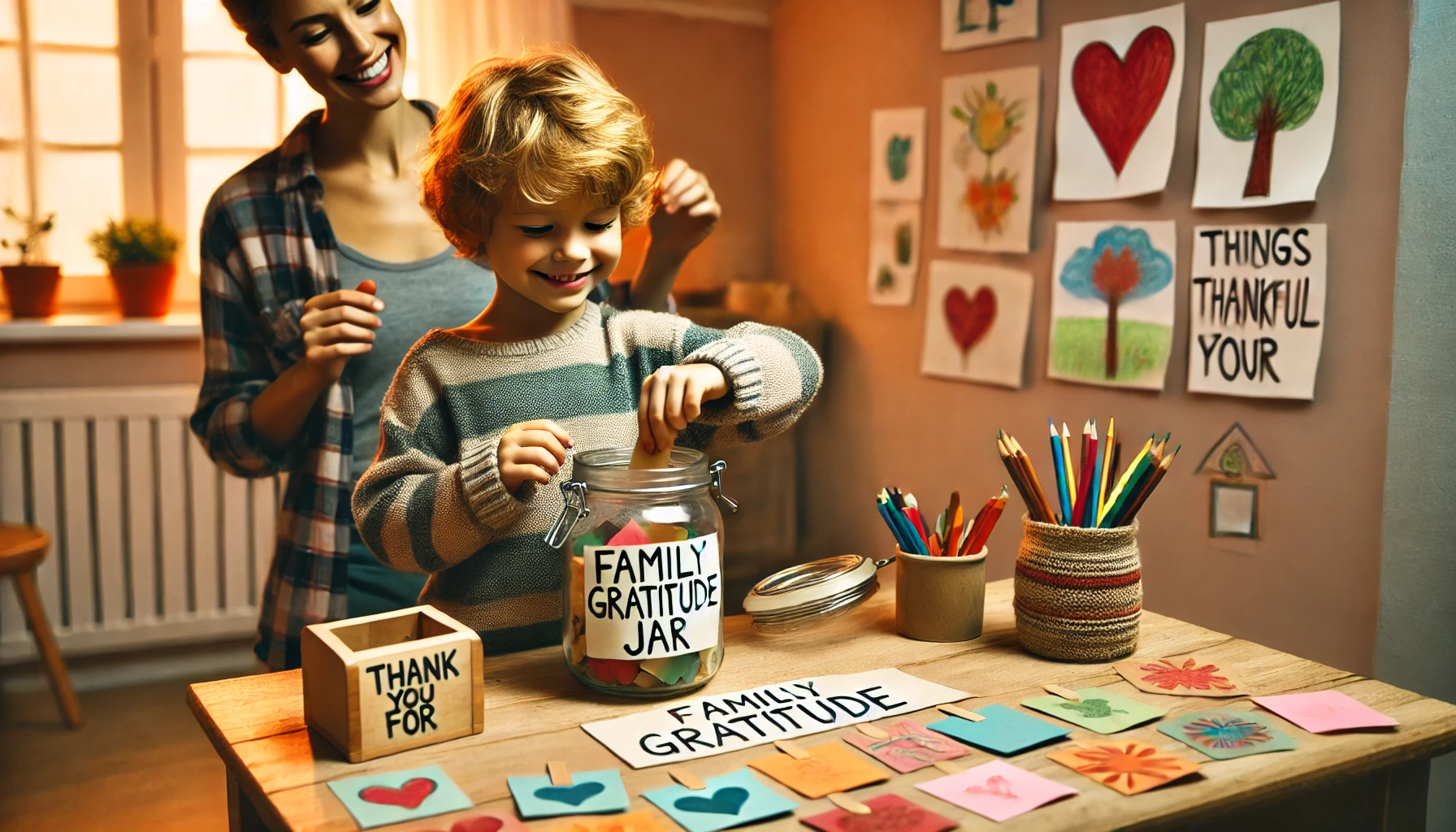How to Teach Young Children About Gratitude and Appreciation
Gratitude is a powerful tool for nurturing happiness and positive relationships. Teaching young children to notice and appreciate the good things in their lives helps them develop empathy, kindness, and emotional well-being. Even at a young age, children can learn to express thankfulness through simple words, actions, and reflections.
Why Teaching Gratitude Matters
- Promotes positive thinking and emotional health
- Builds empathy and kindness
- Fosters appreciation for others
- Encourages mindfulness and awareness
- Strengthens family and social bonds
1. Explain Gratitude in Simple Words
Start with relatable examples.
Activity Idea:
- Say: “Gratitude means feeling happy about the good things we have.”
- Use examples: “Like saying ‘thank you’ when someone helps you.”
- Ask: “What is something you’re happy to have today?”
What Kids Learn:
- The meaning of gratitude.
- Awareness of positive moments.
- How to express appreciation.
2. Create a Family Gratitude Jar
Make thankfulness visible.
Activity Idea:
- Decorate a jar and place slips of colorful paper nearby.
- Each day, write or draw something you’re grateful for and place it in the jar.
- Read the notes together at the end of the week.
What Kids Learn:
- Daily gratitude practice.
- Reflection on good experiences.
- Joy in sharing positive thoughts.
3. Practice Thank-You Notes and Words
Teach everyday appreciation.
Activity Idea:
- Help your child make thank-you cards for friends, family, or teachers.
- Model using kind words: “Thank you for playing with me!”
- Celebrate thank-you moments with praise.
What Kids Learn:
- Expressing gratitude verbally and creatively.
- Kindness in communication.
- Recognition of others’ efforts.
4. Read Books About Gratitude
Stories make lessons memorable.
Activity Idea:
- Read books like Bear Says Thanks by Karma Wilson or Thanks a Lot by Raffi.
- Discuss: “What were the characters thankful for?”
- Draw pictures of things your child appreciates.
What Kids Learn:
- Emotional connection to gratitude.
- Inspiration from story examples.
- Imaginative expression of thankfulness.
5. Play the “Gratitude Game”
Turn gratitude into a fun activity.
Activity Idea:
- Take turns saying something you’re thankful for.
- Add a twist: name something for each letter of the alphabet (“A: apples, B: books”).
- Celebrate creative answers!
What Kids Learn:
- Quick thinking about positive things.
- Fun in gratitude practice.
- Flexibility in expressing appreciation.
6. Reflect on the Day Together
Reflection builds awareness.
Activity Idea:
- At bedtime, ask: “What was the best part of your day?”
- Share your own gratitude moments to model reflection.
- Keep a simple gratitude journal with drawings or stickers.
What Kids Learn:
- Daily mindfulness.
- Awareness of joyful moments.
- Comfort in end-of-day reflection.
7. Show Gratitude Through Actions
Actions speak louder than words.
Activity Idea:
- Help your child do something kind for someone else: a small gift, a drawing, or helping with a chore.
- Explain: “When we help others, we show we are thankful for them.”
- Celebrate these acts of kindness.
What Kids Learn:
- Active expressions of gratitude.
- Connection between feelings and actions.
- Joy in giving back.
8. Be a Gratitude Role Model
Children learn by example.
Activity Idea:
- Share your gratitude aloud: “I’m thankful for this sunny day!”
- Express appreciation to your child: “Thank you for helping me clean up!”
- Point out gratitude moments in everyday life.
What Kids Learn:
- Daily gratitude habits.
- That thankfulness is part of family life.
- Positive reinforcement through modeling.
Final Thoughts
Teaching young children about gratitude and appreciation builds a foundation for a joyful, empathetic life. Through playful activities, family rituals, and daily reflections, kids learn to notice the good things around them and express their thanks. These early habits foster kindness, strengthen relationships, and create a more positive outlook on the world.
